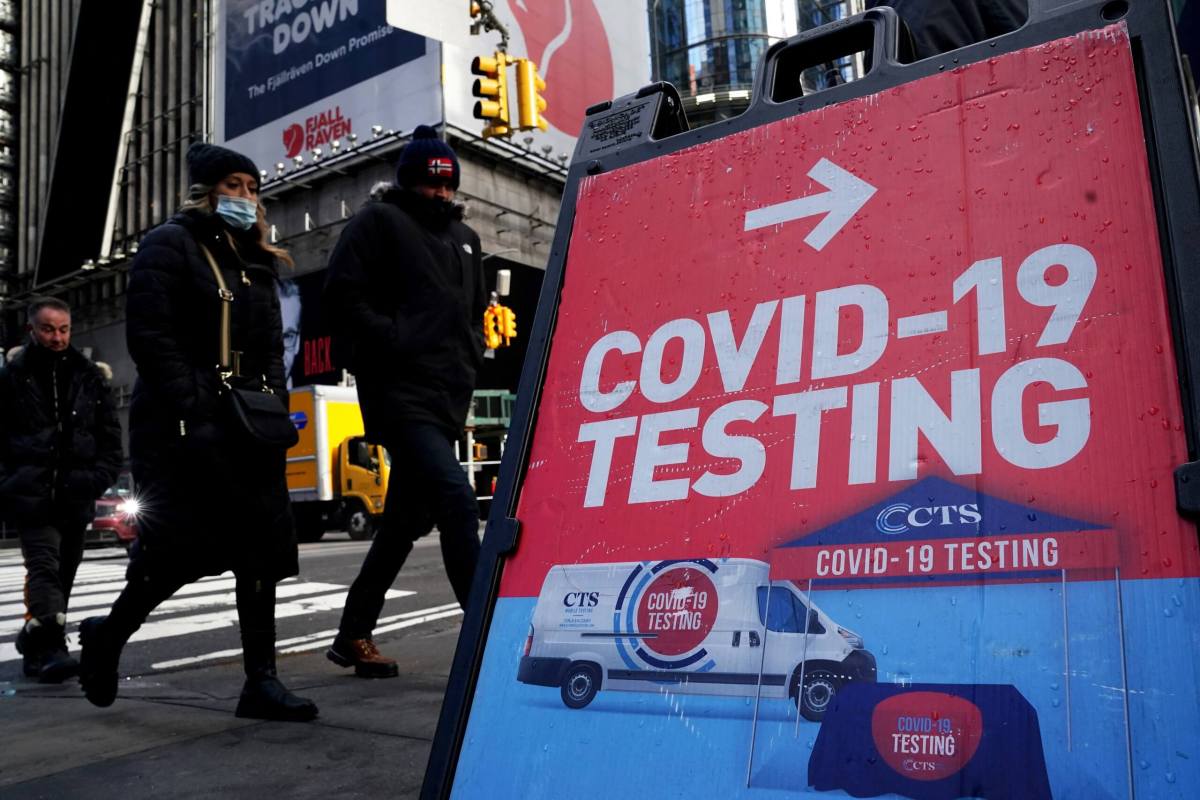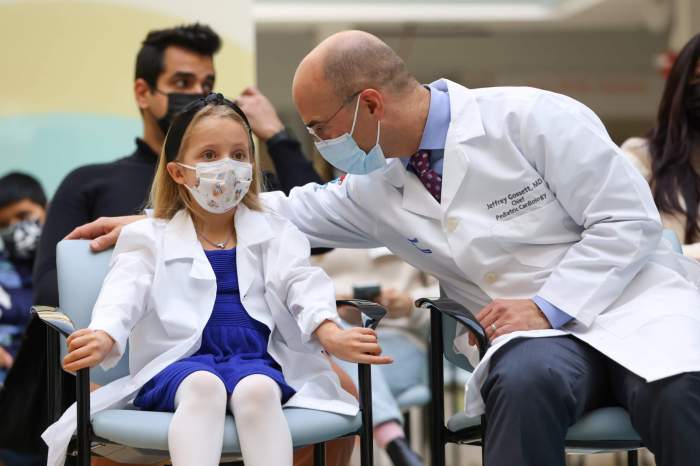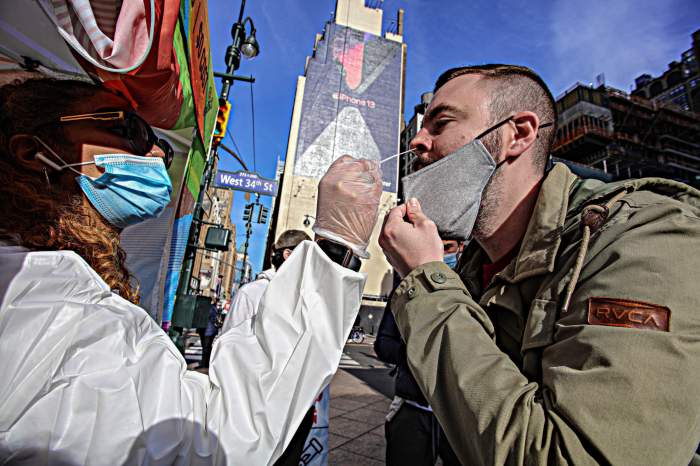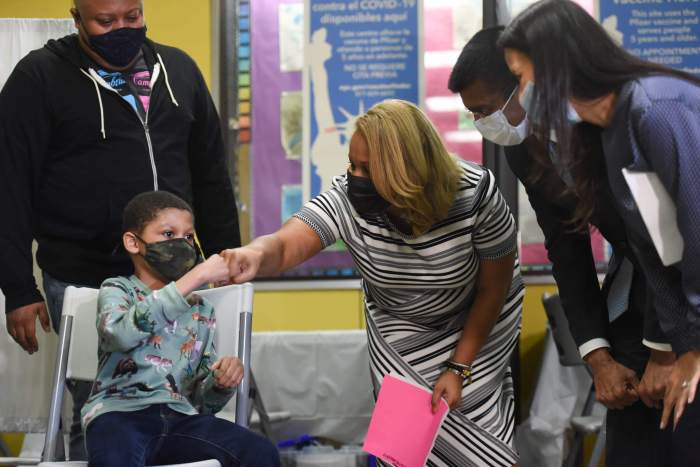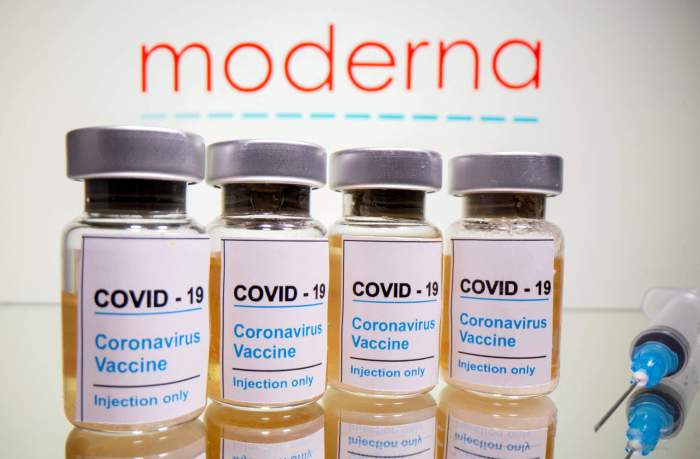Almost every indicator that the city’s Health Department uses to track COVID-19 shows that the sharp uptick in infections in New York City connected to the Omicron variant continues to drop just as dramatically.
The Five Boroughs, however, are far from out of the woods on this latest crisis. Almost every corner of the city has a positivity rate of above 10%, transmission remains very high (more than 1,000 cases per 100,000 people), and thousands of new cases are being detected daily.
Still, New York City finds itself in a much better place now than it did just two weeks ago, when the 7-day positivity rate exceeded 32% and 23 communities saw rates above 40%. As of Jan. 21, the city’s 7-day positivity rate was down to 17.67% and falling, and not one neighborhood in the Five Boroughs had a rate exceeding 30%.
In all, 49 areas of the city saw 7-day positivity rates of 20% or higher between Jan. 12-18. Queens communities were largely at the top of the list; seven of the 15 areas with the highest positivity rates were located in “The World’s Borough.”
Flushing/Murray Hill/Queensboro Hill (ZIP code 11355) led all of New York City with a 29.61% positivity rate and 945 new cases during the period, followed by two areas of Ozone Park: the 11416 area had a 27.05% positivity rate and 356 cases, and the 11417 area had a 25.79% rate and 357 cases.
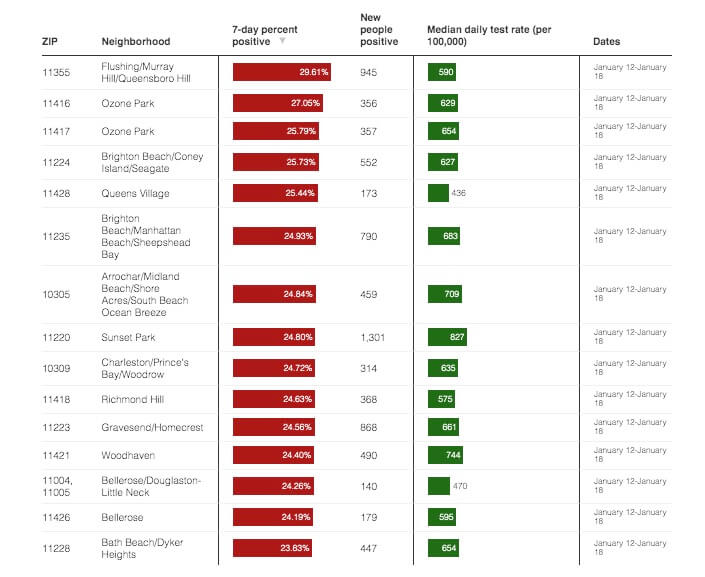
Just three neighborhoods of New York City had seen 1,000 or more new COVID-19 cases between Jan. 12-18, with the most coming from Sunset Park, Brooklyn (11220), which had 1,301 new infections and a 24.8% positivity rate.
The other two communities were in Queens: Corona/North Corona (11368), which had 1,066 cases and a 19.68% positivity rate, and Elmhurst (11373), which had approximately 1,000 cases and a 20.14% positivity rate.
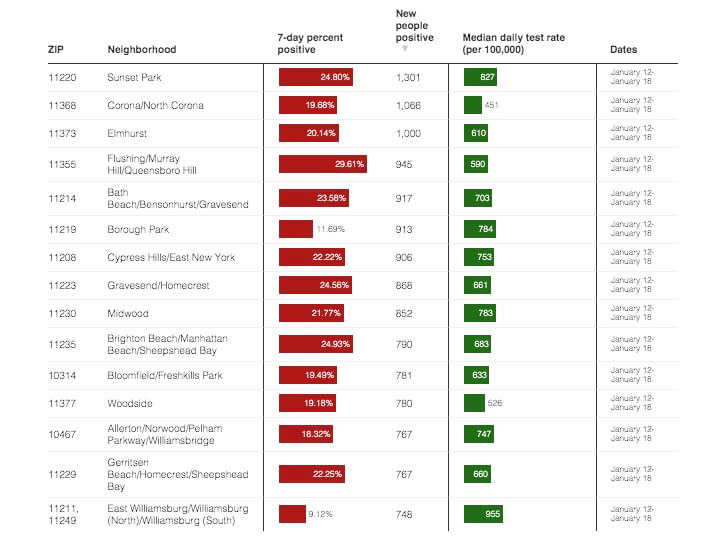
On the opposite side of the spectrum, three New York City areas had a 7-day positivity rate of 10% or less. The Financial District of Manhattan (10004) had the lowest rate at 7.41%, with 24 new cases detected, followed by two Brooklyn communities: Bedford-Stuyvesant/Clinton Hill/Fort Greene (11205, 7.65%, 375 new cases) and East Williamsburg/Williamsburg (11211/11249, 9.12%, 748 new cases).
In all, 17 communities had 100 or fewer new cases between Jan. 12-18, the least of which was in City Island, Bronx. Just 21 people tested positive for COVID-19 during the period, but the island still had a 17.5% positivity rate.
Many of the other areas with the fewest COVID-19 cases were located in lower Manhattan, specifically the Financial District, Battery Park City and Tribeca.
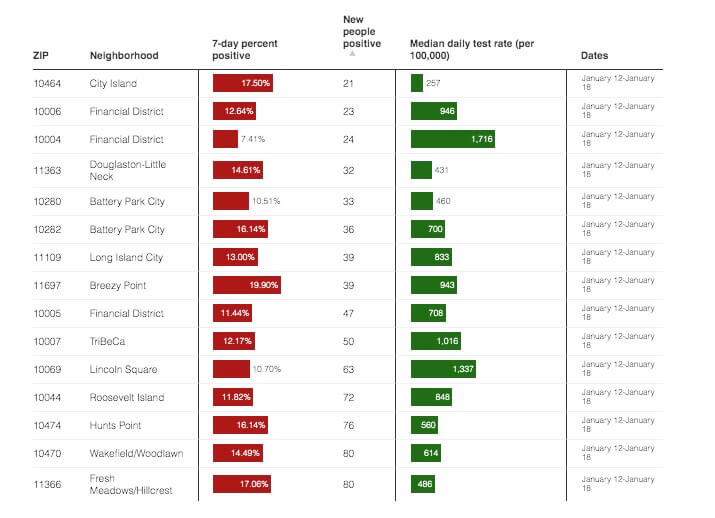
The citywide transmission rate plummeted significantly, dropping by more than half, over the past week, from 2,230.56 cases per 100,000 people on Jan. 11 to 1,031.33 cases per 100,000 on Jan. 18.
Two areas of the city saw a transmission rate on Jan. 18 below the citywide rate: the Bronx (941.26 per 100,000) and Manhattan (914.16 per 100,000).
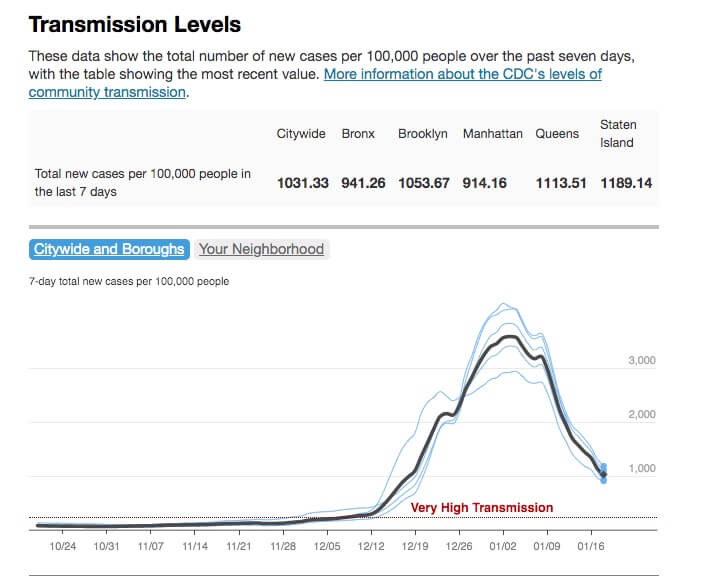
Vaccines are keeping more New Yorkers from serious illness and death, as the Health Department data shows.
Unvaccinated New Yorkers, as of Jan. 8, were about 13 times more likely to contract COVID-19, 18 times more likely to be hospitalized, and 17 times more likely to die from the illness than vaccinated New Yorkers.
The case rate for unvaccinated New Yorkers was 13,073.69 per 100,000; by comparison, the rate for vaccinated residents was just 1,019.88 per 100,000. Hospitalization rates for unvaccinated residents was 517.88 compared to 28.47 for vaccinated New Yorkers; and the death rate was 25.76 for the unvaccinated and 1.54 for the vaccinated.
The vaccines do not guarantee that you’ll avoid COVID-19 altogether, but they have proven to be very effective at reducing the severity of symptoms, or helping individuals be completely asymptomatic.



